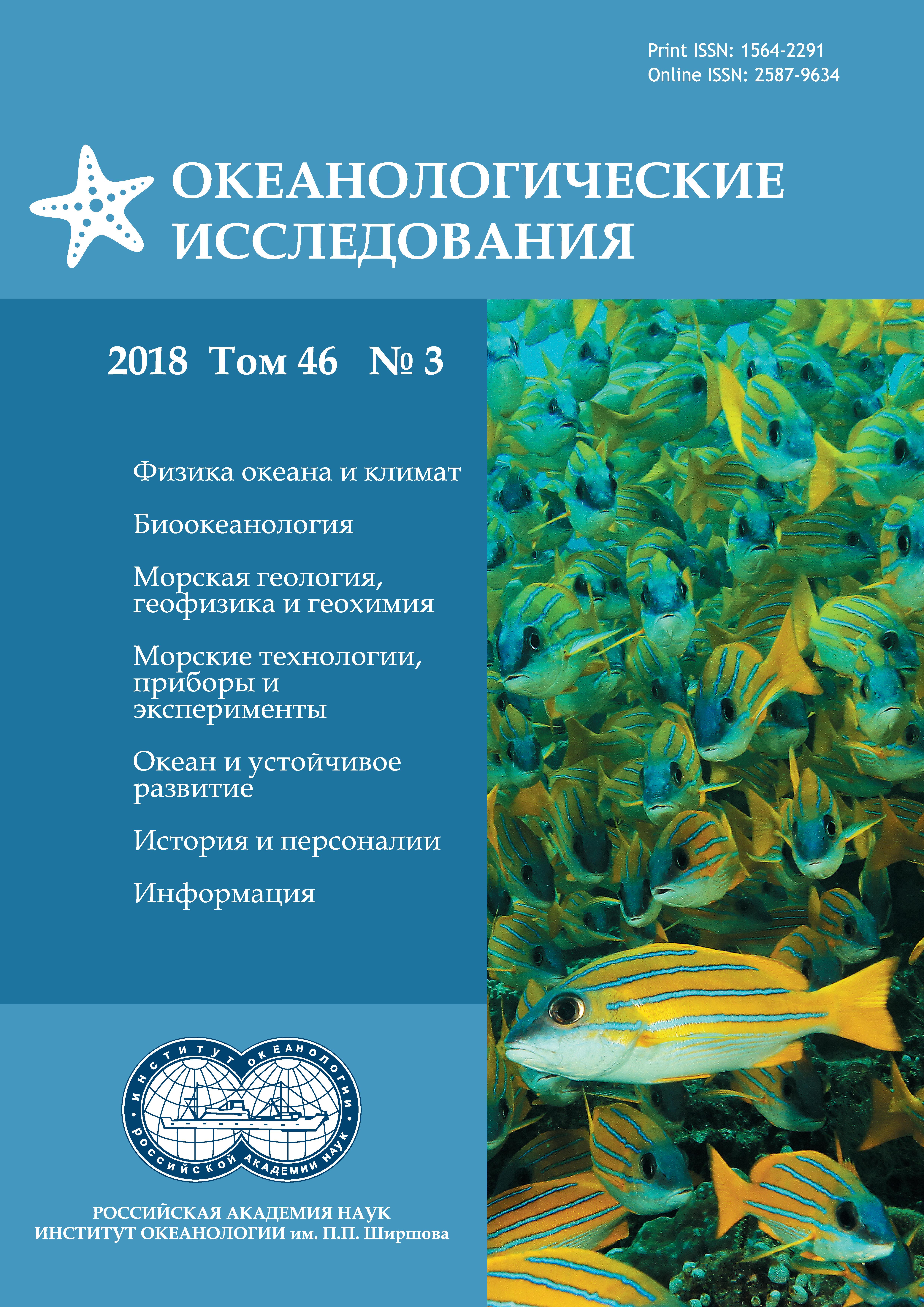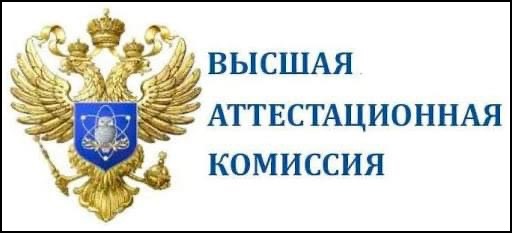ГЕТЕРОТРОФНЫЙ МИКРОПЛАНКТОН ЮЖНОЙ ОКОНЕЧНОСТИ ЖЕЛОБА СВЯТОЙ АННЫ В ОСЕННИЙ ПЕРИОД (КАРСКОЕ МОРЕ)
Аннотация
В работе рассмотрены результаты исследования микробиоты пелагиали южной оконечности желоба Св. Анны в конце вегетационного периода в 2007 и 2011гг.
Были проанализированы численность, биомасса и продукция бактериопланктона, а также обилие и видовой состав гетеротрофных флагеллят и инфузорий. Величины обилия и продукции бактерий, наблюдавшиеся в желобе, были существенно ниже значений, характерных для поверхностного распресненного слоя воды над шельфом Карского моря. Величины численности бактериопланктона верхнего прогретого слоя в 2007 г. были в несколько раз ниже, чем в 2011 г. (10-60 тыс.кл/мл и 24-147 тыс. кл/мл соответственно). В глубжележащих слоях воды эта разница нивелировалась. Межгодовые различия в величинах продуции бактериопланктона также были наиболее ярко выражены в верхнем 60-метровом слое: 0-0.17 и 0.05-0.87 мгС/м3 в сутки в 2007 и 2011 г. соответственно. На распределение обилия гетеротрофных флагеллят и инфузорий существенное влияние, по всей видимости, оказывало контурное течение вдоль склона желоба. В области его влияния в 2007 г. высокие значения численности флагеллят (154±29 кл/мл) были отмечены по всей толще водного столба, тогда как в 2011 г. они были приурочены к верхнему 50-метровому слою, превышая почти в два раза аналогичные показатели на соседних станциях (810±102 и 481±61 кл/мл соответственно).
Результаты мультифакторного анализа показали, что численность гетеротрофных флагеллят, а также число видов простейших снижались с глубиной, однако в эвфотическом слое наблюдалась разница между двумя годами наблюдений: в 2007 г. обилие потребителей зависело от состояния первичных продуцентов, тогда как в 2011 г. основным фактором, оказывающих влияние на обилие потребителей, являлась численность бактерий. Анализ распределения видового состава гетеротрофных флагеллят позволяет предположить, что сложная вертикальная гидрофизическая структура водной толщи рассматриваемого района не оказывает определяющего влияния на микробиоту этого района. Однако можно проследить влияние основных течений рассматриваемой области на распределение обилия и видового состава гетеротрофных микроорганизмов.
Литература
- Зацепин А.Г., Морозов Е.Г., Демидов А.Н., Кондрашов А.А., Корж А.О., Кременецкий В.В., Пака В.Т., Поярков С.Г., Соловьев Д.М. Циркуляция вод в юго-западной части Карского моря в сентябре 2007 г. // Океанология. 2010. Т. 50. № 5. С. 683–697.
- Иванов Г.И., Нещеретов А.В. Океанографические исследования желоба Святой Анны (Карское море) // Океанология. 1999. Т. 39. № 4. С. 504–514.
- Копылов А.И., Косолапов Д.Б., Заботкина Е.А., Боярский П.В., Шумилкин В.Н., Кузнецов Н.А. Планктонные вирусы, гетеротрофные бактерии и нанофлагелляты в пресных и морских водах бассейна Карского моря (Арктика) // Биология внутренних вод. 2012. № 3. С. 15–24.
- Копылов А.И., Сажин А.Ф., Заботкина Е.А., Романенко А.В., Романова Н.Д., Макаревич П.Р., Венгер М.П. Вирусы, бактерии и гетеротрофные нанофлагелляты в планктоне моря Лаптевых // Океанология. 2016. Т. 56. № 6. С. 869–878.
- Копылов А.И., Сажин А.Ф., Заботкина Е.А., Романова Н.Д. Вириопланктон Карского моря: влияние вирусов на смертность гетеротрофных бактерий // Океанология. 2015. Т. 55. № 4. С. 620–631.
- Кременецкий В.В. Отчет гидрофизического отряда // Исследования экосистемы Карского моря. 59 Рейс НИС «Академик Мстислав Келдыш» (12 Сентября - 7 Октября 2011 г.). М.: ИО РАН, 2011. Т. II. C. 1–71.
- Маккавеев П.Н. Отчет отряда биогидрохимии и геохимии // Отчет о работах в 54-м рейсе НИС «Академик Мстислав Келдыш». M: ИО РАН, 2007. Т. II. C. 196–264.
- Мошаров С.А. Распределение первичной продукции и хлорофилла «а» в Карском море в сентябре 2007 г. // Океанология. 2010. Т. 50. № 5. С. 933–941.
- Мошарова И.В., Мошаров С.А., Ильинский В.В. Особенности распределения бактериопланктона с активным метаболизмом в водах желоба Святой Анны (Карское море) осенью 2011 г. // Океанология. 2017. Т. 57. № 1. С. 128–136.
- Романова Н.Д. Структурно-функциональные характеристики бактериопланктона Карского моря. Автореферат дисс. к. б. н. 03.02.10. М., 2012. 26 с.
- Романова Н.Д., Мазей Ю.А., Тихоненков Д.В., Сажин А.Ф., Азовский А.И. Сообщества гетеротрофных микроорганизмов на границе «вода-дно» в Карском море // Океанология. 2013. Т. 53. № 3. С. 375–386.
- Романова Н.Д., Сажин А.Ф. Взаимосвязь между объемом бактериальных клеток и содержанием в них углерода // Океанология. 2010. Т. 50. № 4. 556–565.
- Azam F., Fenchel T., Field J.G., Gray J.S., Meyer-Reil L.A., and Thingstad F. The Ecological Role of Water-Column Microbes in the Sea // Marine Ecology Progress Series. 1982. Vol. 10. P. 257–263.
- Boras J.A., Sala M.M., Arrieta J.M., Sa E.L., Felipe J., Agusti S., Duarte C.M., Vaque D. Effect of ice melting on bacterial carbon fluxes channelled by viruses and protists in the Arctic Ocean // Polar biology. 2010. Vol. 33. P. 1695–1707.
- Fenchel T. The microbial loop-25 years later // Journal of Experimental Marine Biology and Ecology. 2008. Vol. 366. P. 99–103.
- Jiang Y., Yang E.J., Min J.O., Kang S.H., Lee S. Using pelagic ciliated microzooplankton communities as an indicator for monitoring environmental condition under impact of summer sea-ice reduction in western Arctic Ocean // Ecological Indicators. 2013. Vol. 34. P. 380–390.
- Maranger R., Vaque D., Nguyen D., Hebert M.P., Lara E. Pan-Arctic patterns of planktonic heterotrophic microbial abundance and processes: controlling factors and potential impacts of warming // Progress in Oceanography. 2015. Vol. 139. P. 221–232.
- Menden-Deuer S., Lessard E.J. Carbon to volume relationships for dinoflagellates, diatoms, and other protist plankton // Limnology and oceanography. 2000. Vol. 45. P. 569–579.
- Pavlov V., Pfirman S. Hydrographic structure and variability of the Kara Sea: Implications for pollutant distribution // Deep Sea Research Part II: Topical Studies in Oceanography. 1995. Vol. 42. P. 1369–1390.
- Porter K.G., Feig Y.S. The use of DAPI for identifying and counting aquatic microflora // Limnology and oceanography. 1980. Vol. 25. P. 943–948.
- Sazhin A.F., Artigas L.F., Nejstgaard J.C., Frischer M.E. The colonization of two Phaeocystis species (Prymnesiophyceae) by pennate diatoms and other protists: a significant contribution to colony biomass // Phaeocystis, Major Link in the Biogeochemical Cycling of Climate¬Relevant Elements. Springer. 2007. P. 137–145.
- Shauer U., Loeng H., Rudels B., Ozhigin V.K., Dieck W. Atlantic Water flow through the Barents and Kara Seas // Deep Sea Research Part I. 2002. No. 49. P. 2281–2298.
- Sherr B.F., Sherr E.B., Andrew T.L., Fallon R.D., Newell S.Y. Trophic interactions between heterotrophic protozoa and bacterioplankton in estuarine water analyzed with selective metabolic inhibitors // Marine Ecology Progress Series. 1986. Vol. 32. P. 169–179.
- Sherr E.B., Caron D.A., Sherr B.F. Staining of heterotrophic protists for visualization via epifluorescence microscopy // Handbook of methods in aquatic microbial ecology. 1993. P. 213–227.
- Sorokin Y.I., Sorokin P.Y. Plankton and primary production in the Lena River estuary and in the south-eastern Laptev Sea // Estuarine, Coastal and Shelf Science. 1996. Vol. 43. P. 399–418.
- Weisse T. The microbial loop in the Red Sea: Dynamics of pelagic bacteria and heterotrophic nanoflagellates // Marine ecology progress series. 1989. Vol. 55. P. 241–250.
Передача авторских прав происходит на основании лицензионного договора между Автором и Федеральным государственным бюджетным учреждением науки Институт океанологии им. П.П. Ширшова Российской академии наук (ИО РАН)













